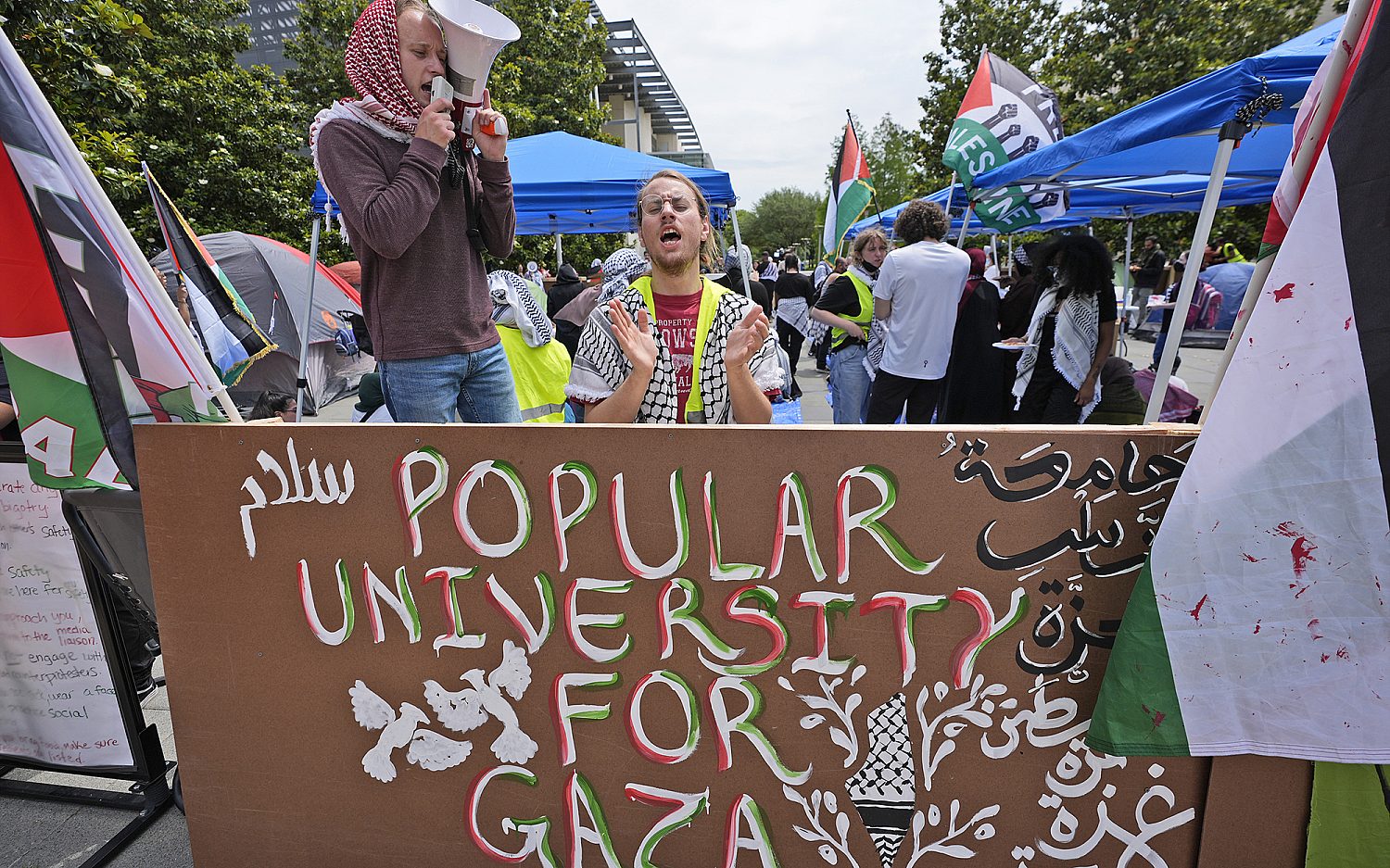The long arm of the lawless
The threat posed by Mexican criminals is beginning to spread north from the U.S.-Mexican border
Last week we discussed the impact that crime, and specifically kidnapping, has been having on Mexican citizens and foreigners visiting or living in Mexico. We pointed out that there is almost no area of Mexico immune from the crime and violence. As if on cue, on the night of Feb. 21, a group of heavily armed men threw two grenades at a police building in Zihuatanejo, Guerrero state, wounding at least five people. Zihuatanejo is a normally quiet beach resort just north of Acapulco; the attack has caused the town's entire police force to go on strike. (Police strikes, or threats of strikes, are not uncommon in Mexico.)
Mexican police have regularly been targeted by drug cartels, with police officials even having been forced to seek safety in the United States, but such incidents have occurred most frequently in areas of high cartel activity like Veracruz state or Palomas. The Zihuatanejo incident is proof of the pervasiveness of violence in Mexico, and demonstrates the impact that such violence quickly can have on an area generally considered safe.
Significantly, the impact of violent Mexican criminals stretches far beyond Mexico itself. In recent weeks, Mexican criminals have been involved in killings in Argentina, Peru, and Guatemala, and Mexican criminals have been arrested as far away as Italy and Spain. Their impact-and the extreme violence they embrace-is therefore not limited to Mexico or even just to Latin America. For some years now, STRATFOR has discussed the threat that Mexican cartel violence could spread to the United States, and we have chronicled the spread of such violence to the U.S.-Mexican border and beyond.
Traditionally, Mexican drug-trafficking organizations had focused largely on the transfer of narcotics through Mexico. Once the South American cartels encountered serious problems bringing narcotics directly into the United States, they began to focus more on transporting the narcotics to Mexico. From that point, the Mexican cartels transported them north and then handed them off to U.S. street gangs and other organizations, which handled much of the narcotics distribution inside the United States. In recent years, however, these Mexican groups have grown in power and have begun to take greater control of the entire narcotics-trafficking supply chain.
With greater control comes greater profitability as the percentages demanded by middlemen are cut out. The Mexican cartels have worked to have a greater presence in Central and South America, and now import from South America into Mexico an increasing percentage of the products they sell. They are also diversifying their routes and have gone global; they now even traffic their wares to Europe. At the same time, Mexican drug-trafficking organizations also have increased their distribution operations inside the United States to expand their profits even further. As these Mexican organizations continue to spread beyond the border areas, their profits and power will extend even further-and they will bring their culture of violence to new areas.
Burned in Phoenix
The spillover of violence from Mexico began some time ago in border towns like Laredo and El Paso in Texas, where merchants and wealthy families face extortion and kidnapping threats from Mexican gangs, and where drug dealers who refuse to pay "taxes" to Mexican cartel bosses are gunned down. But now, the threat posed by Mexican criminals is beginning to spread north from the U.S.-Mexican border. One location that has felt this expanding threat most acutely is Phoenix, some 185 miles north of the border. Some sensational cases have highlighted the increased threat in Phoenix, such as a June 2008 armed assault in which a group of heavily armed cartel gunmen dressed like a Phoenix Police Department tactical team fired more than 100 rounds into a residence during the targeted killing of a Jamaican drug dealer who had double-crossed a Mexican cartel. We have also observed cartel-related violence in places like Dallas and Austin, Texas. But Phoenix has been the hardest hit.
Narcotics smuggling and drug-related assassinations are not the only thing the Mexican criminals have brought to Phoenix. Other criminal gangs have been heavily involved in human smuggling, arms smuggling, money laundering, and other crimes. Due to the confluence of these Mexican criminal gangs, Phoenix has now become the kidnapping-for-ransom capital of the United States. According to a Phoenix Police Department source, the department received 368 kidnapping reports last year. As we discussed last week, kidnapping is a highly underreported crime in places such as Mexico, making it very difficult to measure accurately. Based upon experience with kidnapping statistics in other parts of the world-specifically Latin America-it would not be unreasonable to assume that there were at least as many unreported kidnappings in Phoenix as there are reported kidnappings.
At present, the kidnapping environment in the United States is very different from that of Mexico, Guatemala, or Colombia. In those countries, kidnapping runs rampant and has become a well-developed industry with a substantial established infrastructure. Police corruption and incompetence ensures that kidnappers are rarely caught or successfully prosecuted.
A variety of motives can lie behind kidnappings. In the United States, crime statistics demonstrate that motives such as sexual exploitation, custody disputes, and short-term kidnapping for robbery have far surpassed the number of reported kidnappings conducted for ransom. In places like Mexico, kidnapping for ransom is much more common.
The FBI handles kidnapping investigations in the United States. It has developed highly sophisticated teams of agents and resources to devote to investigating this type of crime. Local police departments are also far more proficient and professional in the United States than in Mexico. Because of the advanced capabilities of law enforcement in the United States, the overwhelming majority of criminals involved in kidnapping-for-ransom cases reported to police-between 95 percent and 98 percent-are caught and convicted. There are also stiff federal penalties for kidnapping. Because of this, kidnapping for ransom has become a relatively rare crime in the United States.
Most kidnapping for ransom that does happen in the United States occurs within immigrant communities. In these cases, the perpetrators and victims belong to the same immigrant group (e.g., Chinese Triad gangs kidnapping the families of Chinese businesspeople, or Haitian criminals kidnapping Haitian immigrants)-which is what is happening in Phoenix. The vast majority of the 368 known kidnapping victims in Phoenix are Mexican and Central American immigrants who are being victimized by Mexican or Mexican-American criminals.
The problem in Phoenix involves two main types of kidnapping. One is the abduction of drug dealers or their children, the other is the abduction of illegal aliens.
Drug-related kidnappings often are not strict kidnappings for ransom per se. Instead, they are intended to force the drug dealer to repay a debt to the drug trafficking organization that ordered the kidnapping.
Non-drug-related kidnappings are very different from traditional kidnappings in Mexico or the United States, in which a high-value target is abducted and held for a large ransom. Instead, some of the gangs operating in Phoenix are basing their business model on volume, and are willing to hold a large number of victims for a much smaller individual payout. Reports have emerged of kidnapping gangs in Phoenix carjacking entire vans full of illegal immigrants away from the coyote smuggling them into the United States. The kidnappers then transport the illegal immigrants to a safe house, where they are held captive in squalid conditions-and often tortured or sexually assaulted with a family member listening in on the phone-to coerce the victims' family members in the United States or Mexico to pay the ransom for their release. There are also reports of the gangs picking up vehicles full of victims at day labor sites and then transporting them to the kidnapping safe house rather than to the purported work site.
Drug-related kidnappings are less frequent than the non-drug-related abduction of illegal immigrants, but in both types of abductions, the victims are not likely to seek police assistance due to their immigration status or their involvement in illegal activity. This strongly suggests the kidnapping problem greatly exceeds the number of cases reported to police.
Implications for the United States
The kidnapping gangs in Phoenix that target illegal immigrants have found their chosen crime to be lucrative and relatively risk-free. If the flow of illegal immigrants had continued at high levels, there is very little doubt the kidnappers' operations would have continued as they have for the past few years. The current economic downturn, however, means the flow of illegal immigrants has begun to slow-and by some accounts has even begun to reverse. (Reports suggest many Mexicans are returning home after being unable to find jobs in the United States.)
This reduction in the pool of targets means that we might be fast approaching a point where these groups, which have become accustomed to kidnapping as a source of easy money-and their primary source of income-might be forced to change their method of operating to make a living. While some might pursue other types of criminal activity, some might well decide to diversify their pool of victims. Watching for this shift in targeting is of critical importance. Were some of these gangs to begin targeting U.S. citizens rather than just criminals or illegal immigrants, a tremendous panic would ensue, along with demands to catch the perpetrators.
Such a shift would bring a huge amount of law enforcement pressure onto the kidnapping gangs, to include the FBI. While the FBI is fairly hard-pressed for resources given its heavy counterterrorism, foreign counterintelligence, and white-collar crime caseload, it almost certainly would be able to reassign the resources needed to respond to such kidnappings in the face of publicity and a public outcry. Such a law enforcement effort could neutralize these gangs fairly quickly, but probably not quickly enough to prevent any victims from being abducted or harmed.
Since criminal groups are not comprised of fools alone, at least some of these groups will realize that targeting soccer moms will bring an avalanche of law enforcement attention upon them. Therefore, it is very likely that if kidnapping targets become harder to find in Phoenix-or if the law enforcement environment becomes too hostile due to the growing realization of this problem-then the groups may shift geography rather than targeting criteria. In such a scenario, professional kidnapping gangs from Phoenix might migrate to other locations with large communities of Latin American illegal immigrants to victimize. Some of these locations could be relatively close to the Mexican border like Dallas, Houston, San Antonio, San Diego, or Los Angeles, though they could also include locations farther inland like Chicago, Atlanta, New York, or even the communities around meat and poultry packing plants in the Midwest and mid-Atlantic states. Such a migration of ethnic criminals would not be unprecedented: Chinese Triad groups from New York for some time have traveled elsewhere on the East Coast, like Atlanta, to engage in extortion and kidnapping against Chinese businessmen there.
The issue of Mexican drug-traffic organizations kidnapping in the United States merits careful attention, especially since criminal gangs in other areas of the country could start imitating the tactics of the Phoenix gangs. Reprinted with permission of www.stratfor.com.
An actual newsletter worth subscribing to instead of just a collection of links. —Adam
Sign up to receive The Sift email newsletter each weekday morning for the latest headlines from WORLD’s breaking news team.




Please wait while we load the latest comments...
Comments
Please register, subscribe, or log in to comment on this article.